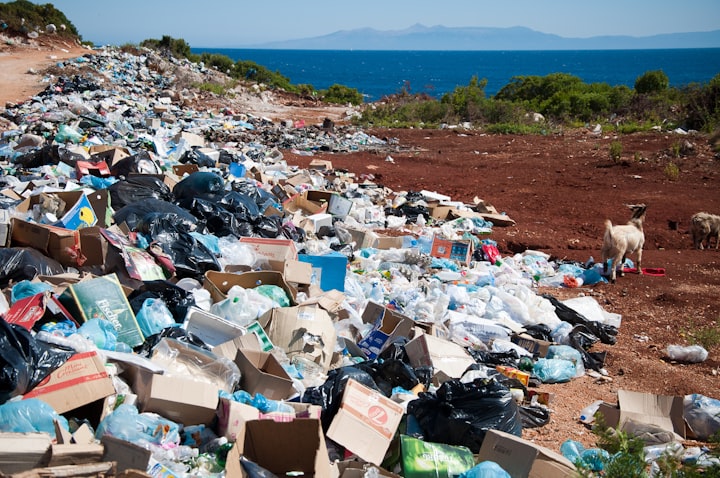Could water be the future to waste management
Burn waste with water

Did you know that you can start fire with water? Yes you heard me right you can start fire with the thing they use to put out fires with. Well, not exactly the same stuff. To start a fire with water, This stuff burns organic material that we’re trying to get rid of, like poop. And scientists think it can be used to get rid of even more persistent waste, too. Like forever chemicals. Supercritical water has the potential to burn all sorts of waste, and might get us over more than one hurdle on the way to clean drinking water. If water is liquid, ice is solid, and steam is gas, supercritical water is the fourth option.~ It’s water that’s been compressed and heated into something that’s not quite a liquid and not quite a gas.Instead, it looks like a gas and in some ways behaves like a gas, but in other ways also behaves like a liquid. To make that happen, you have to heat it under high pressure, to temperatures well above boiling. Imagine putting water on the stove. Normally, when water reaches approximately 100 degrees Celsius it starts to boil. At that temperature, the pressure inside the water equals the pressure of the air outside the water, so the water can become steam. But if you raised the air pressure using a pressure cooker, it would also raise the internal water pressure needed to start boiling. So by raising the air pressure, you can create an environment where water doesn’t boil at 100 degrees. Instead, water inside a conventional pressure cooker boils at about 120 degrees. That’s why pressure cookers can cook food so quickly. By keeping water at a higher pressure, they can heat food to temperatures hotter than the boiling point. If you can increase that pressure even more than a pressure cooker, you can raise water’s boiling point to even higher temperatures. But you can’t keep that up indefinitely. At a certain point, liquid water just can’t keep itself together anymore, no matter how much pressure you put on it. That point is called the critical point, and it happens at 373 degrees Celsius. It also requires a pressure of 217 bars, or more than 200 times the air pressure you’re most likely feeling right now. Once water reaches the critical point, it has to change states. But because of the pressure, it can’t turn itself into ordinary steam. Instead, it becomes something that looks like water vapour, but has some very different properties. Like a gas, supercritical water can make its way through tiny gaps in solid objects. But like a liquid, it can dissolve materials. That last bit is what makes supercritical water so special. Because it’s already really hot, more than three times hotter than ordinary boiling water, it can dissolve substances that wouldn’t normally dissolve in room temperature water. See, when water that hot hits organic material like the stuff that makes up our waste, it breaks the bonds between molecules. So those molecules are now free to react with oxygen in what’s called oxidation. The short and sweet of it is that the waste molecules lose electrons and become more positively charged. And that process of oxidation is what’s chemically happening when you start a fire, too. What we see as burning is actually fuel being oxidized, which is why fires go out when you take away their source of oxygen. That means fires burn away organic waste in a very similar way to supercritical water. When supercritical water encounters a molecule of waste, it breaks up the bonds between the atoms, letting them react with oxygen. That leads to oxidation that burns away what’s left of it. This process is known as supercritical water oxidation. It allows for burning without the same danger as fire. While we do see tiny hotspots of fire in a supercritical water reaction, for the most part, the reaction burns organic material really cleanly, without flames. Which makes it a great method for getting rid of sewage, especially in places where we can’t start fires. Like for example, spacecraft. Researchers at the European Space Agency have found that mixing supercritical water with organic waste materials like ammonium, can dispose of the waste cleanly, turning it into by-products like water and carbon dioxide, both of which can be recycled back into the spacecraft for use later on. Astronauts can use that water, and, well don’t think too much about where it came from. And the CO2 can be used to sustain plants, which can then provide oxygen and food to astronauts so they can stay in space for longer. That means supercritical water could be used to send astronauts on longer and longer space voyages, like the ones that we’ll need to get to Mars. Now, this process still has a few hurdles to overcome before it can be widely applied. The procedure leaves you with salt. And if you have ever lived near the ocean, you know that salt wreaks havoc on delicate machinery, making it dangerous on something like a spaceship. After all, oxidation is responsible for a lot of chemical changes, like corrosion that breaks down metal. But the end product of clean drinking water is worth working out these kinks for, both in space and here on Earth. One of the problems standing between us and clean drinking water at home is per- and polyfluoroalkyls, otherwise known as PFAS. PFAS are chemicals that have been used to manufacture non-stick cookware, but that can now be found in water sources all over the world. They’re called “forever chemicals” because they don’t degrade easily, which makes them difficult to get rid of. But when supercritical water encounters a PFAS molecule, supercritical water oxidation can break it down. So treating contaminated water with supercritical water oxidation can make it safe to drink again!, this oxidation still produces CO2. And while CO2 is useful in space, it’s a pollutant here on Earth. So any large-scale application of supercritical water to clean up our PFAS crisis will need to make sure our climate crisis doesn’t get any worse in the process. Researchers are working on ways to eliminate the CO2 emitted by the reaction before it can reach the atmosphere. When they can’t convert it into something more stable, they inject the CO2 deep into the ground where it’s locked away. With the rapid innovations development, I see a future with a whole lot less waste






Comments
Hlengiwe Meyiwa is not accepting comments at the moment
Want to show your support? Send them a one-off tip.